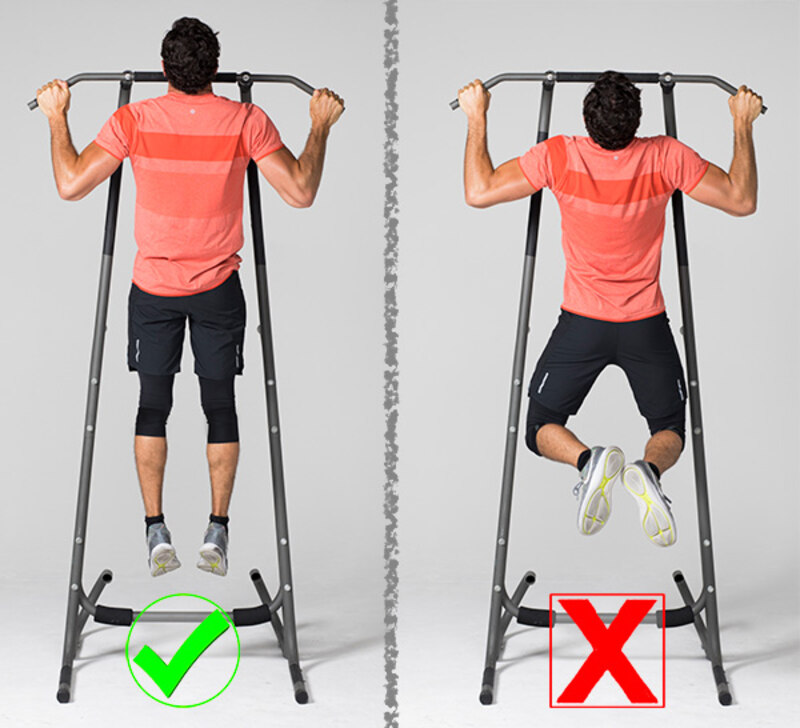A Comprehensive Guide to Working Out for Your Health
Jan 14, 2024 By Madison Evans
Embarking on a fitness journey is an endeavor that can evoke both exhilaration and trepidation. It requires striking the delicate balance between challenge and sustainability. Attaining holistic well-being requires not only rigorous exercise but also careful attention to rest. Furthermore, nutrition plays an integral role in this process. This guide aims to explore an array of diverse workouts, each tailored for specific outcomes, enhancing cardiovascular health, building strength, and addressing various aspects of overall fitness. These workouts promise to elevate your fitness game, regardless of whether you're a beginner or a seasoned enthusiast.
Cardiovascular Exercises at a Glance:
- Engage in brisk walking or jogging for at least 30 minutes a day.
- Elevate your heart rate with high-intensity interval training (HIIT).
- Embrace cycling for a low-impact yet effective cardiovascular workout.
Any fitness routine hinges on cardiovascular exercises. They bolster heart health, amplify endurance, and fortify stamina. An exceptional beginning point involves integrating brisk walking or jogging into your daily regime for a minimum of 30 minutes. Those who seek an added challenge can turn to high-intensity interval training (HIIT). This is a potent cardiovascular workout that alternates between bursts of intense activity and brief rest periods. Besides, for individuals with joint concerns, cycling provides the perfect low-impact alternative.
Strength Training Workouts:
- Embrace bodyweight exercises such as squats, push-ups, and lunges.
- Incorporate resistance training with free weights or resistance bands.
- Explore weightlifting routines to target specific muscle groups.
A well-rounded fitness routine hinges on strength training. It forms the backbone. Bodyweight exercises including squats, push-ups, and lunges serve as an excellent introduction to this type of workout. You should consider incorporating resistance training using free weights or resistance bands for a more advanced challenge as your progress unfolds. Aiming to sculpt specific muscle groups? Tailor your structured weightlifting routines to achieve targeted results.
Flexibility and Balance - The Overlooked Dimensions
- Integrate yoga or Pilates to improve flexibility and balance.
- Include dynamic stretching before workouts to enhance range of motion.
- Prioritize balance exercises to prevent injuries and enhance stability.

Beyond cardiovascular health and strength, true fitness encompasses flexibility and balance: yoga or Pilates can contribute significantly to your routine through controlled movements that promote these key components. Prioritize the incorporation of dynamic stretching into your workouts. This will prepare muscles and joints, thereby enhancing range-of-motion before you dive headfirst into rigorous exercises. Not only do balance exercises aid in injury prevention, but it also fosters stability. This contributes to overall physical well-being.
A Personalized Approach to Your Fitness Routine
- Set realistic and achievable goals based on your fitness level.
- Consult with fitness professionals for personalized guidance.
- Monitor progress and adjust your routine as needed for continuous improvement.
Initiating a fitness journey necessitates an approach tailored to you. Align your current fitness level with realistic goals, and increment the intensity as progression occurs. Ensure that fitness professionals guide you. This will align your routine with both, unique needs and objectives. Monitor your progress regularly and be flexible in adjusting your regimen. This will ensure sustained improvement and pave the way for long-term success.
What to do When Working Out?
- Do's for Cardio Workouts:
Participate in a minimum of 150 minutes per week: this is the recommended duration for moderate-intensity aerobic exercise. To target diverse muscle groups, diversify your cardio routine accordingly.
Ensure that you heed your body's signals and stave off overexertion by progressively elevating the intensity. This is crucial. Before initiating intense cardio sessions, warm up with dynamic stretches. Ensure optimal benefits by monitoring your heart rate and guaranteeing that it remains within your target zone.
- Do’s for Strength Training:
Begin by engaging in bodyweight exercises. Subsequently, transition to more substantial weights. Ensure that your routine includes a diverse array of workouts targeting various muscle groups.
Emphasizing executing each lift with impeccable form and prioritizing quality over quantity is key here. Promote muscle recovery by permitting sufficient rest between strength training sessions. To ensure progressive overload for muscle growth, progressively increase weights.
- Do’s for Flexibility and Balance Workouts:
Incorporate dynamic stretching into your warm-up regimen. This will bolster flexibility. Integrate activities such as yoga or Pilates. They not only augment balance and flexibility but also provide a comprehensive full-body workout.
Make balancing exercises your priority. In doing so, you strengthen the stabilizing muscles which is a crucial step to prevent falls. Listen to your body. Do not venture into painful ranges of motion during stretches. Ensure consistency in your flexibility and balance workouts for enduring advantages.
What Not to Do in Workouts?
- Don'ts for Cardio Workouts:
Avoid an excessive amount of cardio without incorporating appropriate rest days. Overtraining, which can result in injuries, is a potential risk. Neglecting strength training should not be an option. To ensure balance, include both cardiovascular and resistance exercises within your routine. Remember also, that poor form must be avoided at all costs.
Maintaining correct posture during activities serves as a preventative measure against potential harm. Do not overlook the warm-up. It prepares your body for cardio exercises' demands. Strive to avoid surpassing your limits. Sustainable and safer gains come through gradual progression. It’s a principle crucial at any fitness level.
- Don’ts for Strength Training:
Do not lift weights that compromise your form as it escalates the risk of injury. Ensure you do not overlook warm-up sets. They condition your muscles and joints for heavier loads. Avoid inconsistent routines, as consistency plays a pivotal role in achieving optimal strength gains.

Avoid skipping rest days. Your muscles require this time for repair and to enhance their strength. Instead of comparing yourself with others, concentrate on setting achievable fitness goals, a strategy that will yield better results in the long run.
- Don’ts for Flexibility and Balance Workouts:
Before workouts, you should avoid static stretching; instead, save it for post-workout when your muscles are warm. Ensure that you incorporate balance exercises into your routine without neglecting them. They not only contribute to overall stability but also aid in injury prevention. This is a crucial aspect of any fitness regimen. Instead of forcing yourself into challenging yoga poses which is a potentially risky approach, opt for a more sustainable strategy. Progress gradually and steadily over time. Focus on controlled and deliberate movements during flexibility exercises, avoiding any rush. Don’t neglect two aspects, balance and flexibility. They are crucial components of holistic fitness.
In Conclusion
A multifaceted approach is necessary for achieving and maintaining overall fitness. The foundation of a healthy heart lies in cardiovascular exercises, whereas strength training constructs the muscles that bolster it. Fostering a holistic sense of well-being necessitates not neglecting flexibility and balance's importance.
Embarking on this journey, always bear in mind that it is not solely about reaching a destination. Rather, the focus should be on cultivating lifestyle changes and habits. Elevate your fitness routine, and witness the transformative power of health and wellness through a balanced, comprehensive approach to exercise.







